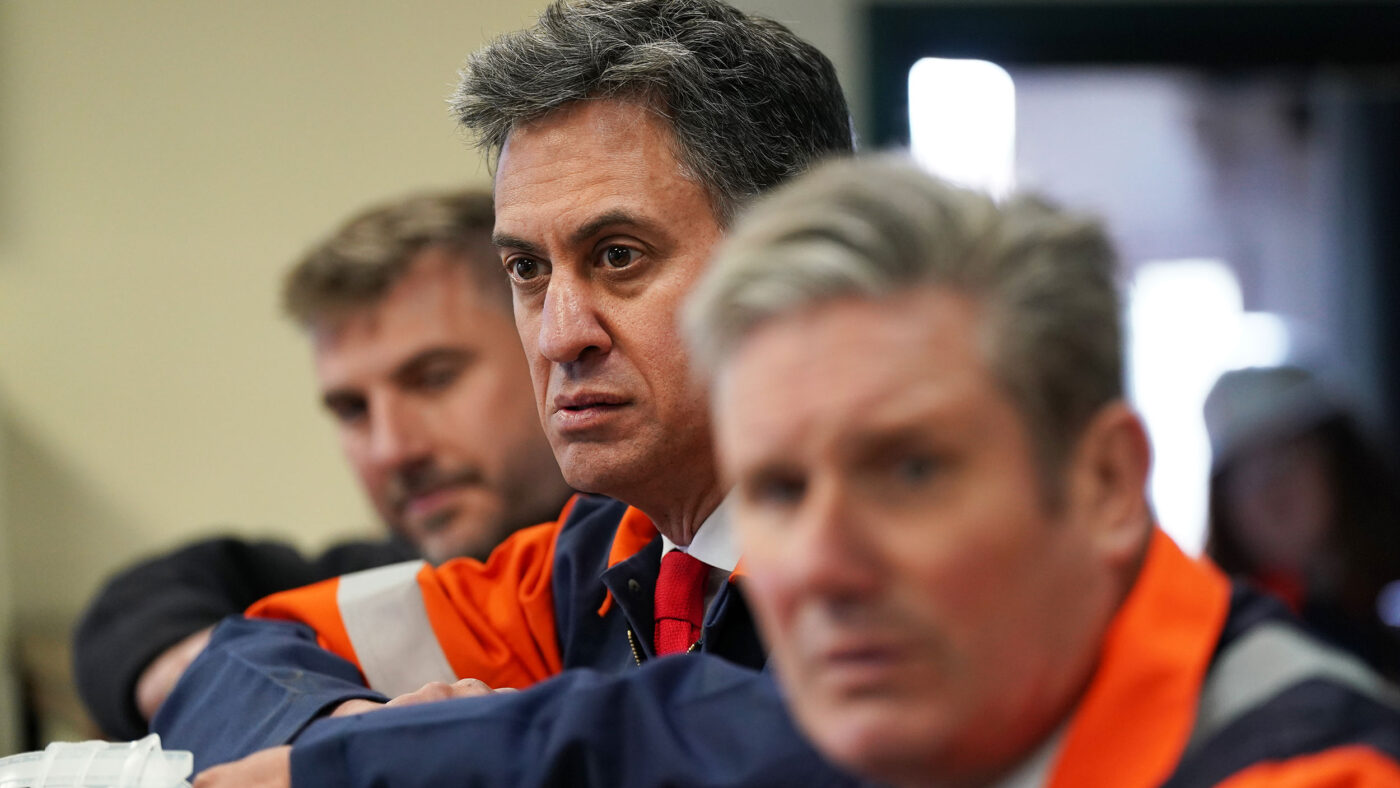It’s not hard to see how Keir Starmer got himself into the position of promising to decarbonise the electricity grid by 2030 – five years earlier than the government’s own target. Net zero is popular with the public, he will have concluded, therefore if Labour tries to push a little ahead of the Conservatives it will come across as positive and ambitious.
But shouldn’t he have stopped to consider the practicalities first? Unlike the 2050 net zero target, which still lies a reassuring distance over the horizon relative to the careers of today’s politicians, 2030 will fall very nearly within the lifetime of the next Parliament. Starmer has committed Labour to a policy which will have very severe repercussions if he goes on to put it in their manifesto. By promising that decarbonising the grid will save electricity consumers money he has made himself an even greater hostage to fortune.
One who won’t be betting on him getting out alive is Gary Smith, leader of the GMB union, who told The Spectator last week that the 2030 deadline is ‘impossible’. ‘I don’t even worry about it,’ he added, because ‘it cannot be done’. One of the reasons, he said, is because there is a shortage in the supply of undersea cables, which would be necessary to build an electricity grid involving even more offshore wind – as well as interconnectors with other countries’ electricity grids. The four global suppliers, he says, have full order books until 2030.
But Starmer’s problems won’t end there. It is true that there has been a significant transformation of the grid in the direction of renewables over the past decade. Onshore wind grew from 3.4% of total electricity generation in 2012 to 10.8% in 2022. Offshore wind grew from 2.1% to 13.8% and solar from 0.4% to 4.1%. Add on nuclear as well as biomass and landfill gas (the last two of which are not really zero carbon, even if the government likes to claim them as such) and official figures claim that 56.2% of electricity in 2022 came from ‘low carbon sources’. Look at the figure in isolation and it might seem tempting to believe that full decarbonisation of the grid is now little more than a formality – a tidying-up exercise.
But that ignores the detail. Firstly, as Gary Smith noted, adding further wind capacity is not going to be easy. Between 2012 and 2019 the price of wind power fell sharply, partly thanks to a fall in the price of commodities. That has now reversed, making further investment in wind a lot less attractive to investors. In the most recent auction of contracts for offshore wind last month, the government received not a single bid. If Starmer wants more wind power he is going to have to up the subsidies on offer – putting lie to his claim that a zero carbon grid will save consumers money.
While wind and solar have largely pushed coal out of the grid (its share of generation fell from 39.2% in 2012 to just 1.7% in 2022), we have become more reliant on gas – which has grown from 27.5%in 2012 to 38.4% in 2022. Why? Because we need gas to balance the supply of power from wind and solar – we turn the gas up and down to compensate for gaps when the wind isn’t blowing and the sun isn’t shining. On a good day, we can generate over 50% of our electricity from wind and solar; on a bad one it falls to less than two percent.
The question is: what would we do if gas power wasn’t available, as it won’t be from 2030 onwards according to Starmer’s plan? We can’t use nuclear power to fill the gap because it needs to work at a steady level of output. Moreover, nuclear output is destined to plunge in coming years as older reactors close down and there is a dearth of new stations to replace them. Hinkley C might just be open in time for Starmer’s deadline – the latest estimate for opening is 2028, over a decade behind the original schedule – but there is no chance of having any more nuclear stations opened by then.
What about energy storage? Forget it – until well after 2030 at least. To store energy in lithium batteries currently costs around six times what it costs to generate the electricity in the first place. Moreover, to install enough storage to save energy from a sunny summer’s day to be used the depth of a winter’s night would require a level of investment by 2030 which is not even remotely possible. At present, Britain has the capacity to store only around an hour’s worth of electricity.
Demand management? That is, after all, a large part of the plans of National Grid ESO, the company which manages the grid. Varying prices can help even out demand for electricity throughout the day, but to what levels would electricity prices have to surge to match demand with a supply which can vary by a factor of 50, depending on the weather?
As Gary Smith argues, it is hard to take Starmer’s 2030 decarbonisation plans remotely seriously. The more poignant question is what political price will Starmer pay when this becomes clear to all?
Click here to subscribe to our daily briefing – the best pieces from CapX and across the web.
CapX depends on the generosity of its readers. If you value what we do, please consider making a donation.


